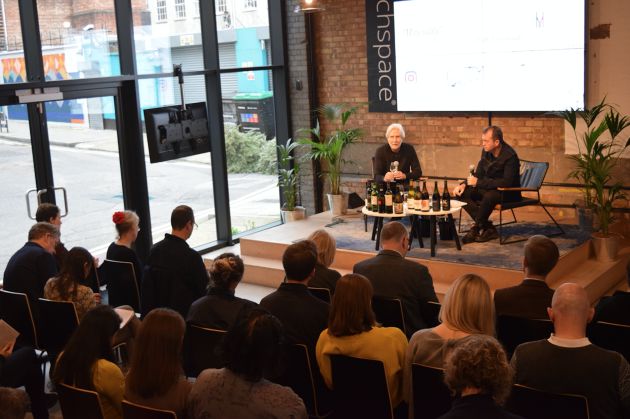
Hallgarten hosts ‘minerality’ summit and tasting
Importer Hallgarten hosted a multi-media event in London yesterday to explore the subject of 'minerality' in wine. The wide-ranging discussion took place between Hallgarten's head of buying Steve Daniel and journalist Dr Jamie Goode.
Following a tasting of 11 wines from Hallgarten’s portfolio, which were picked by Daniel and Goode as they were deemed to demonstrate mineral characteristics, the pair sat down to discuss the hard-to-pin-down tasting term during an hour-long chat which was broadcast via Instagram Live.
The conversation sought to find out what they ascribe minerality to when tasting wine and touched upon soil chemistry, winemaking processes and why the term is becoming increasingly popular among the trade and consumers alike.
“Minerality is this term which didn’t exist in the wine lexicon until the late 1980s,” said Jamie Goode during his introduction. “I’ve chatted to a few people who have been around the block for a while and they can’t recall ever having used the word ‘mineral’ to describe wines before the 1980s”
Steve Daniel, who began buying wine for Oddbins in the late 1980s, has seen a huge increase in the use of the descriptor in his time as a buyer and believes that we are set to see the word mineral more and more as wine styles change.
“When I started buying wine, finding wines that were faultless was a major task and the winemaking in those days was a little primitive and oxidation was a big issue,” he said. “Now with reductive winemaking and the fashion of what people want to taste changing I think we will get more descriptors which are mineral and these kind of delicate wines will become more to the fore.”
Despite its increased use there remains a lot of confusion about exactly what minerality is, what it tastes like and how it comes to be flagged in certain wines and not others. Both Daniel and Goode agreed that a stone-cold definition of the term will always be elusive, but both have their own interpretations.
“I’m looking for that length of flavour that extends beyond the fruit. A common theme for me with wines that express minerality is no oak or minimum oak influence as I think that minerality is a fleeting flavour and an influence like oak can get in the way,” said Daniel.
Goode picked it out as “almost like a slight salinity on the palate” and argued that the term mineral is often treated unfairly compared to other common tasting terms.
“People assume that when we talk about mineral taste in a wine that we are being literal, yet if we talk about a wine being leathery or that we are ‘tasting cherries in this wine’ we are not literally saying that the wine has wine has cherries in it or leather in it. So why can’t we use ‘minerality’ as a sort of picture language,” he said.
During a conversation on the influence of soil to perceived minerality in wine Goode added: “I’m sure to many people that the idea of being able to taste the influence of the soil is absolute heresy, but we are not positing that there is translocation of flavour elements through the roots into the grapes that survive the winemaking process then produces flavours in the wines, but there’s a plausible scientific explanation that soil chemistry could affect gene expression in the grapes indirectly which would then alter the flavour and flavour precursors that are produced in the grapes which are then transformed by the yeasts into flavour compounds which we taste in the wine.”
The discussion concluded with another chance to taste the flight of wines alongside Daniel and Goode and quiz them further on this most elusive and divisive of wine expressions.
Keywords:
- wine
- flavour
- Hallgarten
- winemaking
- steve daniel
- Jamie Goode
- summit
- minerality
- descriptors
- soil chemistry
- character




